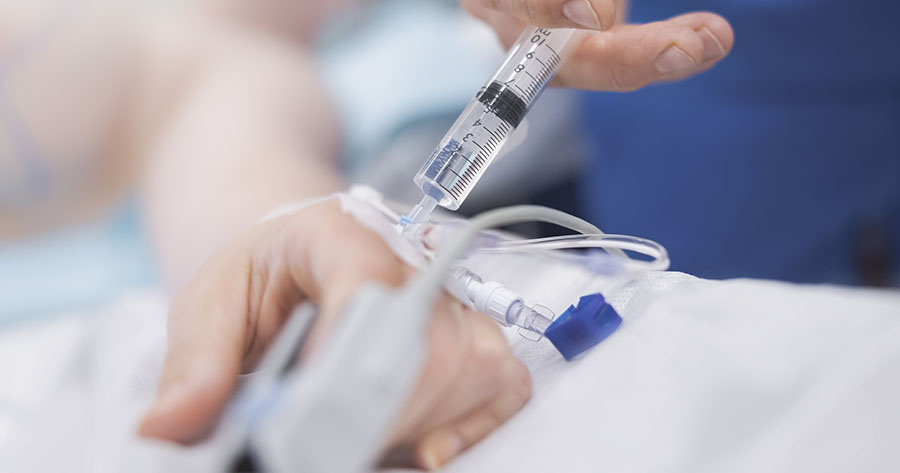Insulin error is common and we have evidence to prove it. Every year, on a single day in the autumn when the leaves are falling, inpatient teams, mainly DSNs, trawl around local wards visiting every inpatient with diabetes collecting clinical and medication error data and distributing survey forms to identify patient experience. This data is fed back to the Health and Social Care Information Centre (HSCIC) National Inpatient Diabetes Audit (NaDIA) and, regrettably, when the data is published in the summer, insulin error still features as an ongoing issue that has not resolved, despite efforts to address this over the years.
The audit has been carried out for the past 5 years, apart from 2014. Improvements were seen between 2010 and 2013 in relation to insulin prescription errors, including failure to write up an insulin prescription, or select the correct insulin and dose, as well as the use of abbreviations for units and administering insulin at the wrong time. However, since 2013, some of these improvements have not been sustained. There has been a rise in cases where insulin is not being written up, prescription charts not signed and insulin being given at the wrong time (HSCIC, 2016).
The fuller picture of insulin error
The NaDIA gathers hospital data on a single day in a year, but we need to know what is happening for the rest of the year and in community settings, not just in hospitals. This kind of data is available from the National Reporting and Learning System (NRLS), which receives patient safety incidents reported from NHS organisations in all healthcare sectors.
Over a 3-year period (January 2013 to the end of 2015), there were 33 605 reported errors; 22 995 of which occurred in hospitals and 8226 errors occurring in the community. Of these, 820 resulted in moderate harm to the patient, 45 resulted in severe harm and there were nine deaths (unpublished data from NHS England). While insulin is mentioned in every case, it should be noted that insulin may not have been the only cause of harm. Nevertheless, these figures should raise concerns.
A new danger in insulin administration
We are well aware of the most common reasons for insulin error, which include prescribing the wrong insulin or the wrong dose, at the wrong time. However, we now also have anecdotal evidence of a most hazardous practice – drawing insulin from prefilled insulin pens and cartridges using insulin syringes.
It is concerning that this may be common practice in some areas, with reports that nurses working in hospitals and in the community are doing this to reduce the risk of needle stick injury, or because they wish to use a single pen device or cartridge for multiple patients.
This is an unsafe practice and has the potential to cause significant harm or even death. In 2015, the Primary Care Diabetes Society (PCDS; 2015) published a statement on this practice, highlighting the dangers and stressing that it must stop. With the recent launch of a number of higher concentration insulins, it is important to understand that if insulin is drawn from a pen device containing these insulin preparations, the insulin syringe will not measure the dose correctly and there is a risk of serious overdose. There is also a serious risk of infection.
The NRLS has been unable to retrieve robust information about the withdrawal of insulin from devices because they have received no reports of serious harm resulting from this practice. Until they do, they are unable to issue any formal warning. Therefore, it is imperative that any such incident, including “near misses”, are reported via the NRLS.
PCDS survey
To gain more insight into the drawing up of insulin from prefilled pens and cartridges, as well as other important information on insulin management, the PCDS is inviting all healthcare professionals involved in diabetes care to complete a short survey.
The survey is open to those working in both primary and secondary care, and the PCDS is keen to receive responses from diabetes nurses.
Details of how to complete this short survey is shown in the box below. The survey should take no more than 10 minutes of your time. Please do take the time to complete it and we would also urge you to tell your colleagues about this important survey. All information received will be treated as strictly confidential.
Insulin safety module
In 2015, the PCDS, in association with TREND-UK, also launched a free e-learning module, “The six steps to insulin safety”. This module provides essential education for all healthcare professionals who manage people on insulin, with the overall aim of reducing insulin errors in clinical practice.
So far, approximately 5000 healthcare professionals have completed the module, but this represents the tip of the iceberg in terms of the numbers of professionals who prescribe, administer or prepare insulin.
To access this helpful module for free, please visit: www.cpd.diabetesonthenet.com.
PCDS survey: Managing insulin
Survey can be accessed at: https://www.surveymonkey.co.uk/r/KJNFSG7
Closing date: 18 July 2016





The risk factors and what might be done to address them.
24 Mar 2025